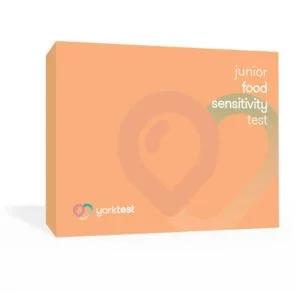Curating a new self-care routine can be an exciting time for many. From ‘holy grail’ moisturizers and serums to hyaluronic acids and night creams, there are thousands of beauty and skincare products available for us to try – whether you keep it simple or have a full 10-step routine.
Beauty product labels can be confusing – and that’s putting it mildly. Product information lists on the back of skincare items can often be difficult to decipher, making it hard to fully understand the ingredients.
The International Nomenclature of Cosmetic Ingredients, or INCI, makes brands use the scientific name of the ingredients across their items, to make them more recognizable across the world. However, the scientific name is often Latin derived, of which not everyone is well-versed in.
According to WebMD, more than a third of people have had an allergic reaction to cosmetic ingredients. And if you have food sensitivities or particularly allergies, knowing which products to pick is crucial.
Many people examine the labels of their food products, or what goes into their bodies, before making a purchase, but could be less likely to do the same with cosmetics.
According to a YouGov survey, one in three people never check cosmetic ingredients. Powder makeup products may be inhaled, bringing potential contaminants into the airways and lungs and lip products can also be ingested by repeatedly licking your lips, increasing the risk of potential allergies straight into the digestive system.
YorkTest looked at the most common food ingredients that are used in cosmetic products and converted them from Latin into English. We compared the ingredients of over 7,000 cosmetic and skincare products in America to find out which foods were used the most.
The research revealed the importance of consumers staying vigilant when it comes to purchasing makeup and skincare products.
Before you go and buy the new trending cosmetic product on TikTok, check out the top 10 common food ingredients that can be found in everyday skincare products.
The top 10 food ingredients found in skincare products are:
| Common food | Latin name | Total no. products found | Total % |
| =1. Sesame seed | Sesamum Indicum | 900 | 12.5% |
| =1. Milk | Lac | 900 | 12.5% |
| 3. Sunflower | Helianthus annuus | 603 | 8.4% |
| 4. Apricot | Prunus armeniaca | 600 | 8.3% |
| 5. Avocado | Persea gratissima | 540 | 7.5% |
| 6. Soya | Glycine soja | 420 | 5.8% |
| 7. Peanut | Arachis hypogaea | 336 | 4.7% |
| =8. Almond | Prunus dulcis | 300 | 4.2% |
| =8. Peach | Prunus persica | 300 | 4.2% |
| 10. Rice | Oryza sativa | 290 | 4.0% |
12.5% of all items analyzed contained traces of sesame seed or milk. Sesame can be added as an extract, oil or natural seed and is found in popular brands like La Mer Hydrating Illuminator and La Mer Regenerating Serum.
While sesame seeds have many benefits, around 1.1 million people in the United States have a sesame allergy.
For example, in the UK, Natasha’s law was introduced to protect people with food allergies who rely on the transparency of ingredients and food labeling for prepacked foods and it must have full compliance or risk people’s lives. It’s named after Natasha Ednan-Laperouse who passed away at age 15 following a severe allergic reaction to a product containing sesame seeds.
Milk alternatives are a popular choice when it comes to everyday diets but for many skincare products, this might not be the case. Out of the 7,100 products, 12.5% contained milk, and for those with a dairy allergy or food sensitivity, this could increase the risk of eczema or hives. Milk is also the most common allergen for kids in the US, affecting 2.5% of the child population.
Rounding out the top five are sunflower, apricot and avocado. Over 600 products contained apricot and sunflower, which can be found in products like Paula’s Choice C5 Boost Vitamin C eye cream and the Inkey SuperSolutions 1% Retinol serum.
Over 336 beauty items contained peanuts, which came seventh on the list of commonly found ingredients. Those who suffer from a peanut allergy could be at high risk of suffering an allergic reaction if the products aren’t labeled clearly.
More commonly found in moisturizers and body lotions, symptoms of a peanut allergy include redness, itching and in severe cases tightening of the throat and shortness of breath.
Completing the top ten are almond, peach and rice. Out of the 7,100 products, over 4% included these ingredients and popular scents like peach and almond can have a subtle fragrance smell which could be easy to miss when mixed with other ingredients.
What to look out for when choosing a product
It can be easy to overlook the presence of certain ingredients when they are listed in Latin terminology as it’s highly unlikely that everyone knows or understands the scientific name. This is why some brands have started listing the English version of the ingredient – such as cera alba (beeswax).
Most products will have an allergens list and have the ingredients clearly labeled from the highest to lowest concentration. This means if an ingredient is listed at the bottom, there will be less included in the product – and vice versa.
When selecting new skincare products it is important to choose brands that make it as simple as possible for consumers to find out what is included.
Rebecca Kaya, senior product regulatory advisor at food label consultants, Ashbury said:
“Any consumer should be reasonably informed and wary when making a purchasing decision. The ‘Latin name’ is in fact the scientific name of an organism. Just as for food ingredients which must be accurately named, substances used for cosmetic purposes that are derived from living organisms must be accurately named. Using the scientific name allows accuracy and means there shouldn’t be any confusion as to what it is.
“The monetary risks are high and could lead to a hefty fine as any omission would technically mean that the notified product and the improperly labeled one were not the same, so no proper notification of a new product was made.
“Ideally, consumers should not need to research claims and ingredients before a purchase; all the information they need will be on a compliant label. However, they should buy from reputable businesses and look for quality and assurance certifications they recognise and a full address on the packaging of the product. The statement ‘caveat emptor’ means ‘buyer beware’; if it sounds too good to be true then it is very likely to be just that.â€
If you think you might be sensitive to certain food ingredients, consider taking a food sensitivity test to identify the foods causing a reaction in your body. You can then make a decision on whether to eliminate those foods from your diet – and maybe look out for them in your favorite skincare products too!
Methodology
To reveal which foods were used in cosmetic products, YorkTest researched the 20 common food items and their Latin and scientific name. We then used CosDNA to search for the product ingredient to reveal how many cosmetic items included the ingredient.
These figures are correct as of February 2023.











